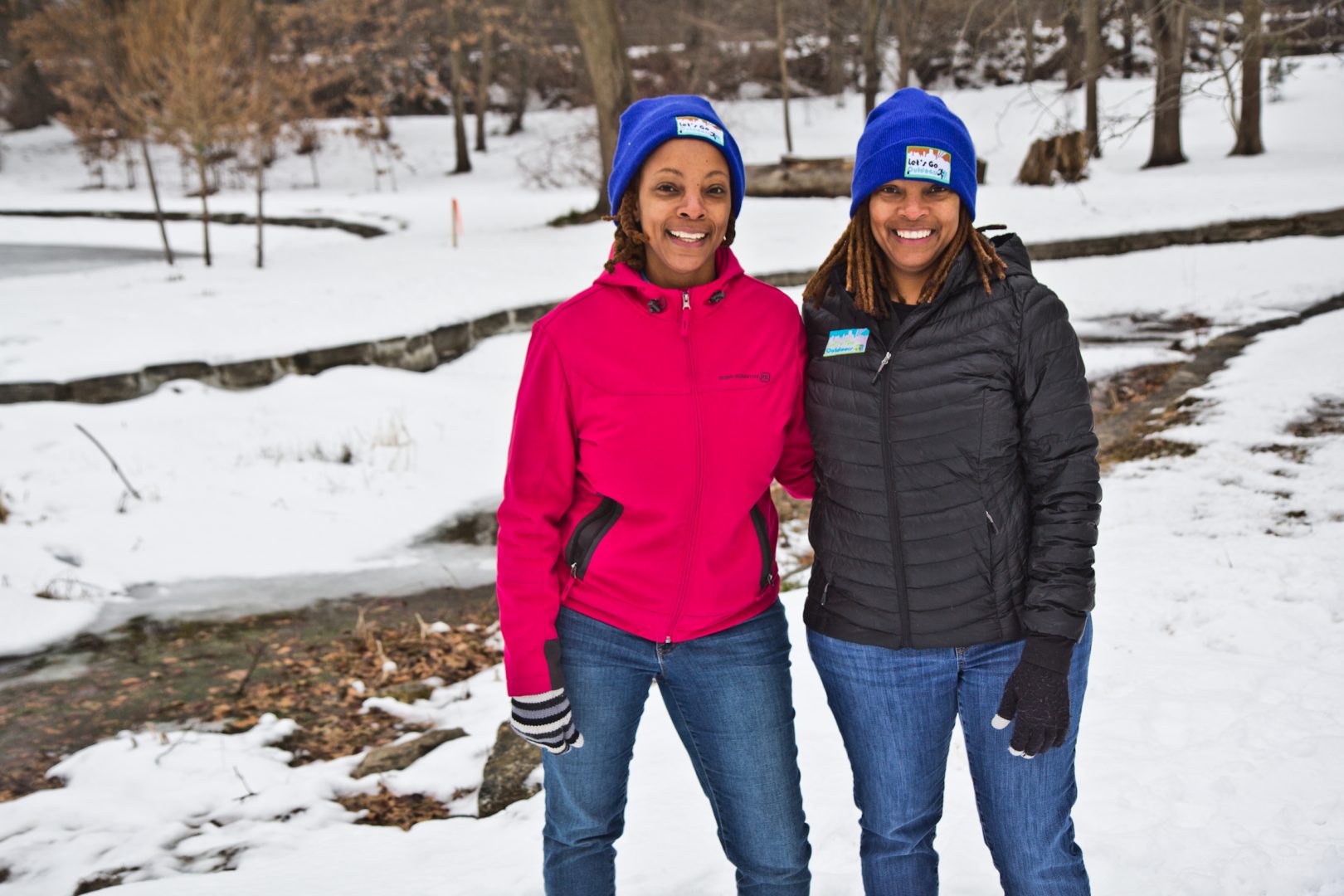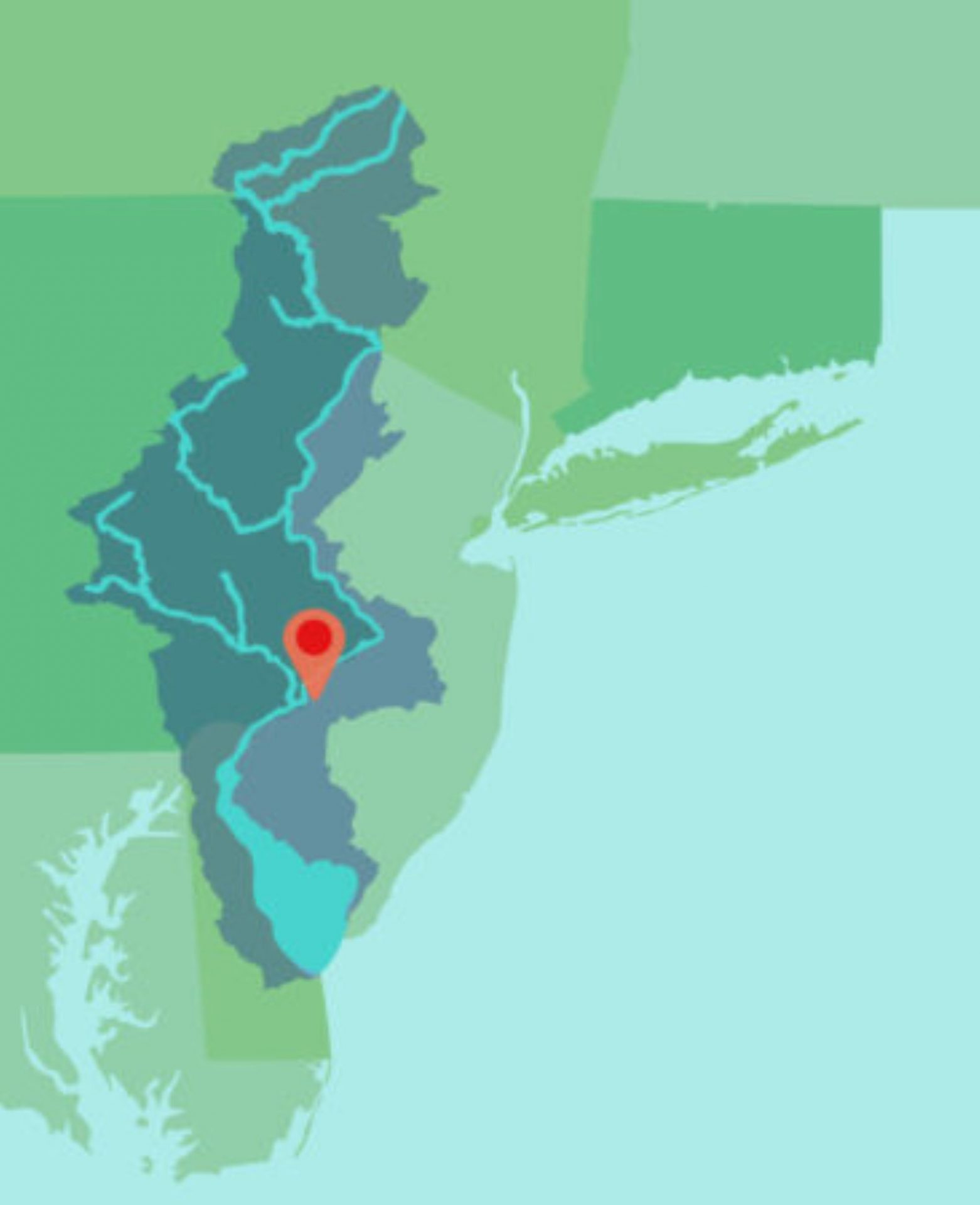
Tarsha and Keisha Scovens at the pond at Awbury Arboretum in Philadelphia near the Wingohocking Creek.
Kimberly Paynter / WHYY


Tarsha and Keisha Scovens at the pond at Awbury Arboretum in Philadelphia near the Wingohocking Creek.
Kimberly Paynter / WHYY

Kimberly Paynter / WHYY
Tarsha and Keisha Scovens at the pond at Awbury Arboretum in Philadelphia near the Wingohocking Creek.
WHYY asked five individuals to tell us about their visions for the Delaware River Watershed — what it is, and what it could be.
Keisha Scovens is the co-founder, with sister Tarsha Scovens, of Let’s Go Outdoors, whose mission it is to connect city communities to outdoor experiences.
Listen to the story:
My twin sister, Tarsha, and I grew up in South Norwalk, Conn., a very different place today than it was then. For us, being outdoors meant playing Red Light, Green Light or Freeze Tag or Double Dutch in the street. It wasn’t until an overnight Girl Scout camping trip when we were 12 that we even engaged with a forest.
It was 10 years later, at age 22, that we were introduced to the beautiful landscapes of the USA while moving cross-country to live in Utah for a year. Driving through the Pine Valley Mountains in Utah, seeing the depth and breadth of the Grand Canyon, feeling the rush of the Snake River while whitewater rafting in Wyoming’s Grand Tetons — we couldn’t believe it was actually real. But the lack of diversity in the people we saw in America’s state and national parks stuck with us — we didn’t want our daughters to one day feel that same disappointment.
 Fast-forward 10 more years to age 32, and we realized our vision of introducing other people of color to outdoor experiences by founding Let’s Go Outdoors, which provides opportunities to get outside for Philadelphia youth, families, and communities, and has enabled us to offer education and help influence change too.
Fast-forward 10 more years to age 32, and we realized our vision of introducing other people of color to outdoor experiences by founding Let’s Go Outdoors, which provides opportunities to get outside for Philadelphia youth, families, and communities, and has enabled us to offer education and help influence change too.
Our vision for the Delaware River Watershed itself is one of an inclusive space for families of color to engage, learn, and understand the flowing connection that most of us take for granted.
We’d already been operating Let’s Go Outdoors for 10 years when we began to reflect on watersheds, and their impact on our lives. As we were leading introductory camping, fishing, hiking, and birding activities, we realized there was something so important that we’d taken for granted. During all those experiences, we had neglected speaking to a basic premise and the contributor to the landscape and beauty itself — water.
So in 2014, LGO connected with environmental consultant Dottie Baumgarten of Sustainable Choices LLC to provide education on behalf of the Philadelphia Water Department. It was then that we began to realize the limited amount of direct watershed educational opportunities that exist for city communities. Often, students are unable to travel to watershed sites, and adult residents often haven’t developed a lens to “see” — to understand, experience, or care for — our waterways.
It amazed us how many Philadelphians don’t realize that the Schuylkill and Delaware rivers are their drinking water source, or know about that connection with the larger watershed both upriver and downriver.
Today, we know that the future of successful watershed education includes flexibility, collaboration, and transitions from short- to long-term experiences, and that it doesn’t overlook the adult component. LGO focuses on families and people with little to no nature experience by offering a variety of environmental activities using informal nature educators. We understand and prioritize methods that include a school-to-neighborhood (and vice versa) option for reaching the community. Our hope is that all ages in a household learn about their watershed and develop confidence in ways to interact with it and sustain it for conserving our rivers, streams, creeks, and tributaries.
Moving forward in 2021 and beyond, LGO will continue education on behalf of the Water Department, and remain a provider of lessons intertwining the environment with the message of healthy watersheds, while staying connected to key organizations.
All of us providing environmental education in some way need to address the longevity and health of our watershed by posing and answering questions such as: What is a watershed? How do I affect our drinking water? What waterways are here? And what can I do to help?
After that, watershed education can be taken to the next level by encouraging adult leadership through experiential activities with the Water Department, the Pennsylvania Department of Conservation and Natural Resources’ state parks, Friends of the Wissahickon, conservancies and land trusts, and other alliances.
When we introduce people of all ages, locally and statewide, to experiences in our watershed, it creates a deeper understanding and connection for a long-term impact.
—
The audio portion of this essay was produced by WHYY reporters Hannah Chinn and Susan Phillips.
This series of essays is part of the broader “From the Source” project and is supported by the Lenfest Institute, the National Geographic Society, and the William Penn Foundation.
StateImpact Pennsylvania is a collaboration among WITF, WHYY, and the Allegheny Front. Reporters Reid Frazier, Rachel McDevitt and Susan Phillips cover the commonwealth’s energy economy. Read their reports on this site, and hear them on public radio stations across Pennsylvania.
(listed by story count)
StateImpact Pennsylvania is a collaboration among WITF, WHYY, and the Allegheny Front. Reporters Reid Frazier, Rachel McDevitt and Susan Phillips cover the commonwealth’s energy economy. Read their reports on this site, and hear them on public radio stations across Pennsylvania.
Climate Solutions, a collaboration of news organizations, educational institutions and a theater company, uses engagement, education and storytelling to help central Pennsylvanians toward climate change literacy, resilience and adaptation. Our work will amplify how people are finding solutions to the challenges presented by a warming world.